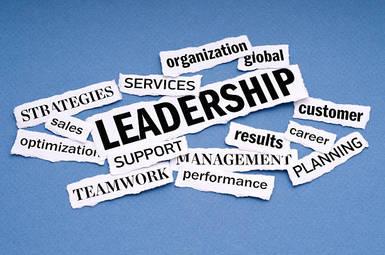Leadership Evaluation
Name
Institution
Leadership Evaluation
Leadership代写 The paper evaluates the components of the leadership performance appraisal form for University Hospital, Newark, New Jersey.
Overview
The paper evaluates the components of the leadership performance appraisal form for University Hospital, Newark, New Jersey. The organizational structure of this hospital run form the chief executive officer down to the support staffs (“University Hospital, Newark, NJ,” 2018). The hospital formulated a standardized technique to evaluate the leadership competence. In essence, the appraisal form constituted two parts, that is, executive competencies and performance goals. The executive competencies measured administrative competencies, leadership, and organizational and strategic competencies.

Each one of these sub-categories has evaluation features of the leader related to it and the organization. They also have selection box to mark the presence of the feature to a specific leader or lack thereof. Each feature present in a leader is then given a rating which is later summed to give category score. The performance competencies, on the other hand, focus on the set goals for performance. The executive is given a chance to list their performance goals with the most important ones given the priority (priority 1) to six. Each of these goals are valid for one year, but they can change given the dynamics of the organization or new responsibilities/roles assigned.
Here the executive (the leader), has a chance to set his/her own goals which are SMART because the performance will be measured on them. The evaluation does also identify the development needs of the leader. The evaluator gives opinion on the leader evaluated in the form to help in leadership development. Lastly, the leader is given an opportunity to offer an opinion in the evaluation criteria and how the leadership performance can be optimized.
The Gap in The Evaluation Leadership代写
The appraisal form has achieved criteria for evaluating the Hospital leadership effectiveness. However, it has not given much thought on assessing decision-making and critical thinking skills of its leaders. The two skills are necessary in any leader for the identification of problems and opportunities and plan for the course of action. A leader with these skills is able to maneuver the politics of the organization without getting distracted nor causing chaos. On the other hand, a critically thinking leader is able to negotiate and enter to a deal regardless of the difficulties in it.
The form also left another essential skill of resilience and change management skills. A leader ought to be an effective change manager. These skills help in among others accepting the positive changes in support services and programs, be able to changes constructively, and communicate change. A good change manager is able to respond efficiently to ideas. Therefore, skills should be evaluated for more understanding on organizational leadership and also to make improvement in performance and create effectiveness.
Comparisons Leadership代写
As there is no perfect leadership assessment technique, many techniques are used to measure the progress made in leadership. However, there are best-recommended practices in leadership assessment which include the use of assessment tools synthetically, simulations, and questionnaire with employee participation. Although these techniques are recommended, there challenges which according to King & Nesbit (2015) can make leadership development and evaluation ineffective. These unlike, the performance appraisal form, use real-time contacts and survey.
Use of assessment instruments synthetically
The approach is important given that human beings are dynamic and therefore need for holistic assessment is necessary. The approach is discussed by Richard (2010). He states the assessment uses different tools and methodologies to help the organizations have a comprehensive understanding of the organizational leadership and how it has been effective.
Simulation techniques Leadership代写
The technique is a traditional approach to leadership assessment and which is costly compared to evaluation form. In practice, the leaders are observed in simulated exercises. It is conducted in a single location, with many leaders and observers working together. The leaders are put into multiple simulated situations for three to four days from where their behavior is observed. The method effective as the leaders are observed in all aspects of leadership in different condition.
However, this approach of simulation is expensive to the organizations. Marilyn, David and Mitchel (2008) expounds on each of these techniques. From their work, the alternatives were developed the first one being Telephone Assessment Program (TAP). The method is conducted live in special specific positions. Second is LEADeR which is a practical assessment. And lastly, use of video camera to record as the leader perform the tasks.
Questionnaire
The approach needs the questionnaires prepared with employee participation. The questionnaire is then used to carry out a survey in the organization with the employees being the primary respondent. The method is effective because the questionnaire includes evaluation in context with organizational structure and traditions which has been identified by the employees.
Improvement Needed in The Evaluation Process Leadership代写
There are no comprehensive assessment criteria for leadership because of the dynamic nature of people as well as organizations and their environment. The appraisal form used by the University Hospital can be improved. First, the organization policy should make it compulsory to have leadership evaluation regularly. This will keeps leadership in check and up to the expected standards. The organization should also involve employees in the evaluation process so that to identify weak areas that need improvement and changes. The two improvements to the process will make the leadership appraisal effective.
Recommendations
The organization should make the evaluation process open and online. Doing so, will make the process take less time and save on cost. It will also help reduce any form of intimidation or biases because there is no face to face interaction. The evaluator should also be neutral so as not to appear to favor some in the organization. The process should be done in phases either quarterly of half a year to make changes in the performance goals and leadership development strategies. To sum up, leadership is key to the success of any organization or institution. When the top command fails, the whole organizations are also doomed to go down. Setting up regular leadership evaluations is essential in maintaining the leadership competencies and performance goals.
References Leadership代写
Marilyn, K., David, M., Mitchell, G. (2008). The next generation of leadership assessments: Some case studies. Public Personnel Management. 37(4) 435-455.
King, E., & Nesbit, P. (2015). Collusion with denial: Leadership development and its evaluation. The Journal of Management Development, 34(2), 134-152. Retrieved from https://search.proquest.com/docview/1650519418?accountid=45049
Richard, K. (2010). Narrative 360° assessment and stakeholder analysis: How a powerful tool drives executive coaching engagements. Global Business& Organizational Excellence. 29(6) 25-37.
University Hospital, Newark, NJ. (2018). Retrieved from http://www.uhnj.org/

更多其他:代写论文 艾莎代写 研究论文代写 商科论文代写 cs论文代写 Case study代写 人文社科代写 Essay代写 艺术论文代写 学术代写 Review代写 文学论文代写 心理学论文代写 哲学论文代写 Report代写 cs代写



